10+ Years Experience
Specialist Horse Menages

Do you have a horse arena you keep in top-notch condition?
You invest a lot of money and effort into maintaining it, and of course you want it to be the best that it can be. But which maintenance practices really make a difference?
What makes one horse arena stand above the rest?
Today, we’ll discuss some of the best tips and tricks we’ve found on how to keep your arena in top shape.
From maintenance of the menage surfacing and footing to selecting the right equipment and accessories, you’ll be able to make sure your horse arena is always safe and ready for its next equestrian outing.
Regularly dragging and harrowing your horse arena is key for maintaining healthy footing.
Additionally, regularly testing and adjusting the footing material moisture levels can also extend the life of your horse arena.
The basics of horse arena maintenance should not be overlooked when it comes to preserving the quality of your arena and ensuring the safety of the animals that use it.
It is important to invest time into regular maintenance in order to ensure a safe, comfortable, and well-prepared environment for riders, trainers, and horses alike.
One aspect of maintenance involves controlling the depth of sand or other menage surfacing in your arena.
Removing any excess dirt or sand will decrease potential injury risk by allowing horses’ hooves to make an easier landing without sinking too deep underneath their feet.
To do this, remove any existing clumps or thick layers of material that may appear unevenly distributed on the arena surface.
Furthermore, it is important to monitor and adjust your arena’s depth quarterly or as needed – approximately 4” for a small arena and 3-4” for a larger sandy dressage arena are accepted general standards.
Also consider monitoring moisture levels; if your area is too dry, ruts can form and pose safety concerns, while overly wet surfaces can lead to mud, which can also cause safety issues.
The ideal moisture level is between 15-25%. You may choose to employ watered drag systems or watering equipment in order to reach and maintain desirable moisture levels in the most efficient manner possible.
Finally, an understanding of basic footing materials and fibres should be taken into consideration as some will require more frequent work than others.
Aside from drag methods mentioned above, some arenas require spot stirring with special tilling tools or handheld flagging devices, while others may benefit from periodic topdressing with clean washed sand or other specialty dressings.
No matter the specifics of your own particular situation and needs when it comes to arena care and upkeep, your own commitment to maintaining standards will go a long way towards providing a comfortable, enjoyable arena environment for equestrian participants for years to come.
Now let’s discuss how to clean and groom your arena dirt for optimal results – getting started with understanding the best practices for scrubbing away debris from barren patches in the riding surface.
Horse arena maintenance is essential to having a safe and comfortable environment for horses and riders.
Factors such as surfacing depth, moisture levels, and footing materials must be taken into consideration in order to reach desired standards.
Cleaning and grooming the surfacing in an arena is also necessary and should be done regularly in order to achieve optimal results.
When cleaning and grooming the arena surface, there is no one-size-fits-all solution.
This decision ultimately comes down to the horse owner’s preference for the type of footing desired.
Some horse owners prefer a deeper and more cushiony base that promotes soundness and helps reduce concussion on the horse’s legs for high performance sports like jumping, while others prefer a firmer, more level, and packed footing to facilitate precise footfalls for dressage.
The two primary options for arena maintenance are either drag bar or deep tine harrowing, which can be used singularly or in combination depending on arena conditions.
Drag bar harrowing uses a metal drag bar with scalloped-edged teeth to create a crumbly yet firm enough surface that allows horses to maintain traction when pushing off as they move around the arena at speed.
While this process is quick and efficient in its ability to groom the riding surface it requires frequent upkeep or else it can quickly cause compaction due to its shallow effect.
Opposite to drag bar harrowing, deep tine harrowing utilises curved plastic tines that penetrate deep into the surface.
The tines retract the surface a couple of inches thick from below the surface, breaking up any compaction caused by human and equine traffic as well as refreshing any existing slope on jump courses.
Despite its effectiveness in loosening hard pan surfaces and promoting evenness at depth beneath the top layer of surfacing, deep tine harrowing can take significantly longer than normal grooming techniques and require additional labour dependent on arena size.
When considering an arena maintenance plan, the surface considerations are necessary, like drainage issues related to standing water build-up after an extended period of rain or weathering.
For more serious drainage issues involving clay soils using discing may be necessary to break up compacted soils as well as provide relief from flooding tendencies enough where water table properly drains away from riding areas.
Ultimately, making decisions regarding your equestrian facility requires understanding its specific needs both above and below ground level based on regional climate patterns such as cold winters or wet springs/summers etc., horsemanship discipline preferences, particular footing consistency requirements, budgets available for maintenance as well as overall aesthetics desired.
Regardless of your overall plan, regular scheduled maintenance is essential for keeping your arena surface in top shape for both you and your horse’s safety and pleasure.
With proper planning and agreement on commitment frequency there’s no reason why your arena base shouldn’t look great all year round, providing a safe environment free of risks associated with unfinished or poorly maintained arenas.
Next we’ll discuss how to properly evaluate and level your riding area’s dirt bed by talking about arena dirt leveling and levelling techniques.
Horse arena levelling is a critical step in the upkeep of an arena.
An uneven surface can reduce footing for equestrian events, and potentially even lead to injury for riders, so keeping your arena’s surface level is paramount.
The main tool for arena levelling is a harrow. This attachment can be hooked up to equipment such as a quad or tractor.
The quad bike or tractor will then drag the harrow across the menage surface to level and smooth it out.
Harrows come in several different sizes and shapes to best suit your specific needs. It is important to always determine the shape and size you need before beginning the process.
Regular maintenance schedules are key when caring for any horse arena – as consistency is necessary to ensure its longevity.
In the next section we will discuss how frequently these practices should take place, as well as what types of tasks should be completed on each visit.
Regular arena maintenance practices are essential to ensuring that your horse arena is safe, effective, and fun for horses and riders.
Regular maintenance is not only important for protecting your investment in the facility, but will also ensure proper drainage of water and adequate traction for horses.
Some routine maintenance tasks that should be done regularly include:
These regular maintenance practices are necessary for keeping your arena usable and safe for horse activities.
The worst thing you can do is neglect regular maintenance, which can lead to costly repairs, detract from the overall appearance of the arena and cause safety problems.
Harrowing, raking, dragging and debris removal are just some of the other essential activities required to keep your horse arena in top shape.
Let’s take a closer look at how these activities fit into an effective maintenance plan.
Harrowing, raking, dragging and debris removal are essential components of maintaining a horse arena.
A properly maintained horse arena is key to providing riders with a safe and comfortable environment for riding and training.
For best results, the arena should be raked and harrowed every few days.
A regular grooming schedule prevents the build-up of packed down surfacing, which can cause an uneven riding surface.
Manure and other debris should be removed from the arena as soon as possible to prevent disease or infection due to standing water.
Additionally, removing manure and other debris will help to reduce flies, which can create a hazardous environment for horses and riders alike.
At least once a month, the arena should also be dragged with a drag harrow or similar device.
The dragging process serves two main purposes: smoothing out the arena surface and removing contaminants such as stones or pebbles that could potentially cause injury to horses during exercise.
If there are larger imbalances in your arena, you may need to fill in divots or depressions with additional material.
Debates still exist around the best method when it comes to proper raking, dragging and debris removal in horse arenas.
There is discussion about when dragging should take place in relation to watering efforts; some suggest doing it before watering and others believe it should be done after watering.
Regardless of your setup preference, properly harrowing, raking, dragging and removing debris from your horse arena is critical to maintaining a safe riding environment for both you and your horse.
With the right plan in place, sanding, watering and filling holes will then become easier tasks to complete in order to keep your horse’s home fit and ready for use.
Next up we’ll cover sanding, watering and filling holes; all essential elements of keeping your horse arena in optimum condition throughout the year!
Caring for your horse arena requires the proper maintenance of sanding, watering and filling holes.
Of these three necessary maintenance steps, experienced riders will likely agree that sanding is the most important.
Sand helps to reduce the impact your horse may feel when landing after jumping, as well as to break up hoof pressure when walking on packed soil.
It also helps to maintain stable footing and control of the surface.
When providing sand topping, professional horse menage construction companies recommend using a minimum depth of 4”-5” throughout your entire riding area.
The type and quality of sand used is also essential; it should be equestrian grade with minimal fines or dust, depending on the use – dressage arenas may require a finer grain than jumping arenas do.
Additionally, you need to make sure that there are no stones in the sand which could injure your horse’s feet.
Watering also helps to keep your arena in top shape by reducing dust and helping to keep footing more consistent for riders.
Water should be distributed consistently over the entire arena surface until puddles begin to form.
Depending on weather conditions and how often you use your arena, watering needs may vary but generally should be done twice per week.
It is important that you never water excessively as this could damage the sub base of the horse arena and create unsafe potholes that may cause injury to horses during training rides.
Filling holes caused by horses hooves or other factors is an essential part of arena maintenance.
Generally speaking, small holes or patches can easily be filled with additional sand; it is important to make sure that the new material you add is level with the rest of the ring surface or slightly higher so that riders do not encounter any uneven spots while training their horses.
Larger holes require a longer process, including excavating dirt or gravel underneath and then refilling with appropriate material to ensure an even base for riding on afterwards.
Overall, sanding, watering and filling holes are all integral aspects of horse arena maintenance when striving to keep your riding space in top shape for both you and your horse’s safety and enjoyment.
Moving forward, dealing with difficult conditions such as excessive rain or extreme dryness is often another challenge faced when caring for its upkeep – something we will discuss further in our next section.

When dealing with difficult surface conditions, it is important to determine the best way to take action and make repairs.
In some cases, it may be necessary to completely rebuild the arena due to severe weather or other compounding issues.
It’s a costly process but can provide great reward in terms of longevity and safety.
On the other hand, arena owners should consider that not all conditions require a complete remodel.
Different steps can be taken to maintain and improve existing conditions for both the horse and rider.
For example, proper draining of the surface by digging trenches or adding a sand fibre mixture has proven effective in many areas.
If there is poor flotation from moisture build-up, adding aeration ports to the bottom layers of dirt can increase circulation.
Lastly, adding a base layer such as rubber chips for cushioning impact can help keep things consistent over a prolonged period of time.
Ultimately, dealing with difficult menage surfacing conditions requires consideration of each individual case in order to effectively diagnose and address problems accordingly.
The right approach can save time and money while preserving the quality of your arena without having to start from scratch.
With this in mind, our next section will look at ways to manage frozen and unstable ground during periods of inclement weather.
Frozen horse menage surfacing is a common problem when maintaining an outdoor riding arena.
Without proper preparation and maintenance, frozen ground can drastically reduce the usability of an arena and pose a danger to horse and rider.
When temperatures drop or the ground is consistently waterlogged, the ground can freeze solid creating an impassable surface.
In addition, inclement weather can create conditions with unstable footing making horses more likely to slip or trip on uneven surfaces.
When faced with these problematic conditions, there are several ways to improve the arena’s usability.
Some simple steps include relieving compacted ground by disk harrowing or dragging harrows to level bumps and dips, installing drainage systems to keep water away from the riding surface, and bringing in sand for consistent footing.
Increasing drainage will also reduce the amount of freezing caused by saturating rain or no sunlight reaching the surface.
For those who choose to apply a de-icer product, be sure to use one that is approved for use around livestock and that does not contain calcium chloride as many of these products are toxic when ingested.
Although these measures may help increase the comfort of your horse during winter months it is always important to consider your own experience level when attempting maintenance on a frozen arena for additional safety concerns.
If potential risks remain too high and the frozen condition persists then experienced professional assistance may be necessary.
When it comes to maintaining a horse arena, having the proper maintenance equipment is essential to its success.
From harrows, rakes and drag mats for surface maintenance to post hole diggers for fences, there are many items that may be needed.
More specialised items such as water hose systems may also be necessary depending on the arena’s purpose.
The debate over what type of equipment should be used in horse arena maintenance is ongoing.
On one hand, purchasing high-quality equipment can be costly, however, spending money on quality tools will ensure they last longer and provide a better experience for both humans and horses.
Additionally, some people believe more specialised tools can be beneficial when it comes to caring for an arena.
For example, upgrading from a manual to motorized rake or using a drag mat with springs for deeper sand penetration.
Some people choose to hire a manage maintenance company or rent larger or more specialised equipment only when needed rather than committing to purchasing them outright.
No matter which option you choose when it comes to selecting arena maintenance equipment, careful planning and due diligence should always be exercised.
By taking the time to research what type of tools are best suited for your specific needs – whether it is through buying quality pieces or renting more specialised tools when necessary – you can equip your team with the right tools and supplies to keep your horse arena in top shape!
Having the right equipment is essential when it comes to properly maintaining a horse arena; however, taking the time and effort to conduct regular maintenance has its own reward.
The benefits of regular horse arena maintenance are well-worth the effort and cost.
With regular arena maintenance, a horse rider can expect an improved riding experience for both themselves and their horses.
Regularly maintained arenas will be generally safer and provide riders with softer footing.
This allows horses to work more efficiently and allows riders to focus on training rather than worrying about dangerous footing conditions.
The arena surface will also become less compacted over time, which is beneficial for a horse’s hooves. Compacted soil can restrict oxygen levels, leading to weakened structures within the hoof itself.
Maintaining an arena also helps prevent dust build-up. Dust that builds up in a dry arena environment can irritate a horse’s respiratory tract and affect good breathing technique while working in the arena.
Not only this, but poles, jumps and other equipment are more visible when there is less dust build up; this reduces the risk of collision between horses and/or riders and these items during riding sessions.
The benefits of regular horse arena maintenance far outweigh the costs and risks associated with it.
With careful planning and consideration of best practices for your specific footing type, you will reap the rewards that better maintained arenas have to offer.
Regular horse arena maintenance is essential for providing a safer training environment while also optimising a horse’s performance.
Proper planning is key in order to maximise the benefits from preparing and maintaining your arena surface regularly without introducing any potential risks or additional costs associated with it.
A well-maintained horse arena is essential for both the safety of the rider and their horse.
Maintaining an arena can be time consuming, costly and labour intensive but if done correctly can ensure an inviting, safe space for riding.
A high quality arena surface will not only create a safe riding environment, but also enable riders to achieve optimal performance from their horse.
Routine maintenance such as harrowing, dragging, watering and grading can help to maintain a quality arena surface.
For arenas with higher levels of traffic, it may be necessary to employ professional services or even more sophisticated methods such as core aeration.
While occasionally skipping routine maintenance may save time and money in the short term, it could have negative consequences for the longevity of the arena in the long run.
To conclude, regularly maintaining a horse arena is essential for ensuring optimal performance from riders and horses alike.
Investing a little bit of time and resources upfront can help keep horses safe and enable riders to enjoy great results in their chosen discipline.
Horse arena maintenance should be done on a regular basis.
How often it is required depends on the amount of use it gets. We recommend at least once a week for most horse stables, but for competition facilities, it should be done once a day.
This helps prevent the build up of dirt and debris. Regular maintenance ensures your arena lasts for years to come, minimising costly repairs and reducing the need for replacement materials.
When it comes to maintaining a horse arena, there are several key areas to focus on.
First and foremost, it’s important to regularly check the footing of the arena—this includes assessing debris and irregularities, removing dangerous stones or objects, and ensuring adequate drainage.
Addressing issues such as ruts, depressions, and unfinished spots can also go a long way in making the arena safer for horses.
Second, you should inspect all equipment and tools used in the arena regularly and make sure that they are properly stored when not in use.
Furthermore, be sure to use quality materials during repairs (e.g., replacing footing) as lower-quality materials can be more dangerous for horses.
Finally, be sure to clean the arena regularly. This includes removing any excrement from horses.
If a horse poos in the arena, it should be removed as soon as possible. If it is not removed quickly, the horse might tread it through the surface and spread it over the surface.
Additionally, be sure to remove any dirt clods or large lumps of footing, along with loose pieces of gravel or other objects.
The type of arena drainage system that should be used for horse arenas depends on the geographical area, soil structure, and climate of the particular area in which the arena is located.
It is important to understand the local conditions so that an appropriate drainage system can be implemented.
In general, a well-designed surface drainage system for a horse arena should consist of a subsurface drainage channel, covered by a layer of aggregate and then topped with a suitable surfacing material such as sand, rubber or gravel.
If the arena is located in an area with high rainfall or floods, it may also be beneficial to install an external system such as swales or underground stormwater piping connected to detention ponds to prevent flooding and runoff.
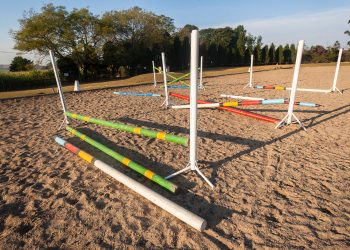
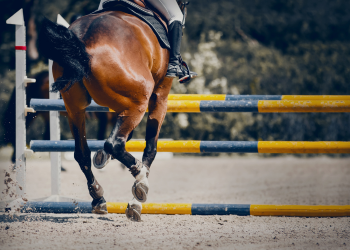
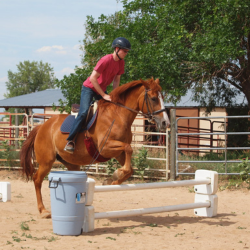
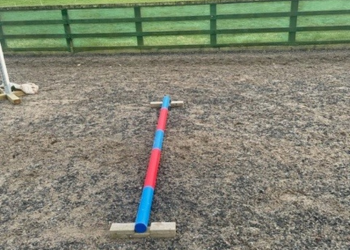
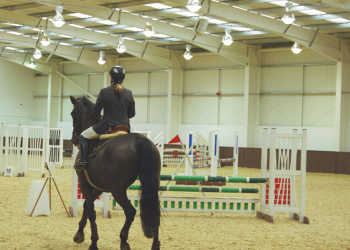

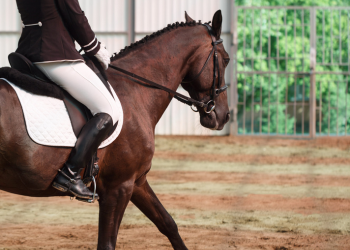


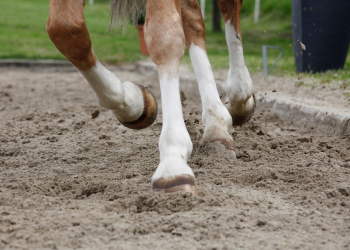
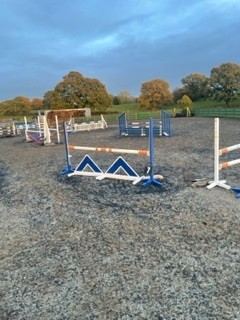
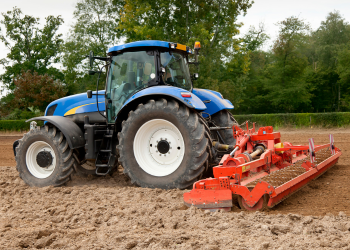

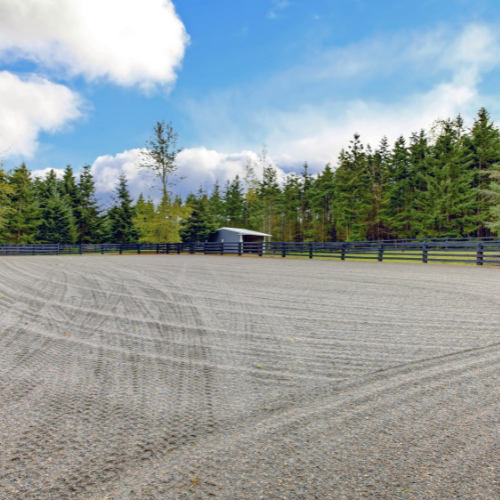

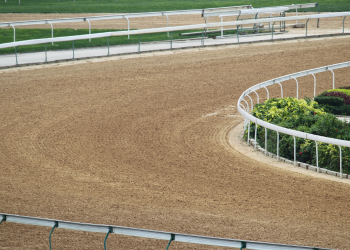

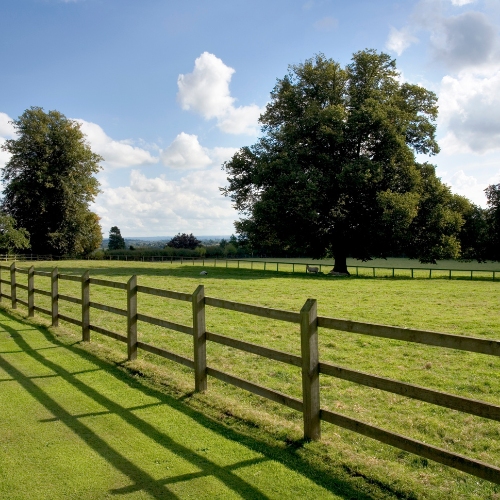
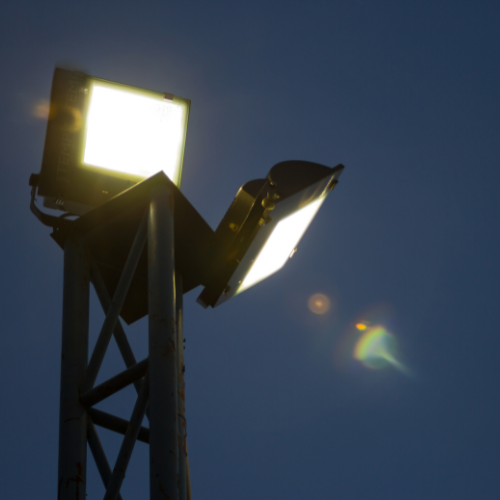
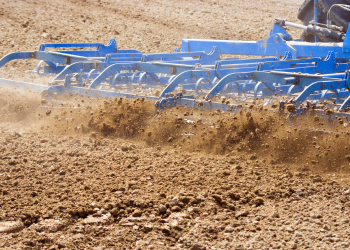
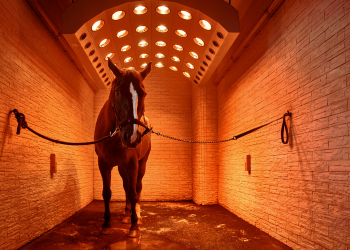

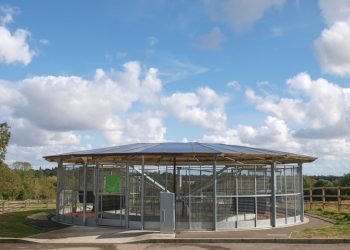
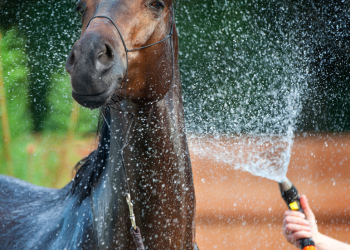
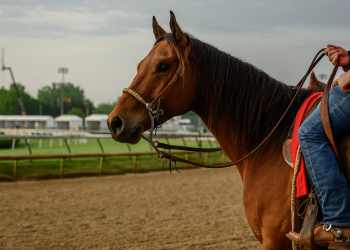
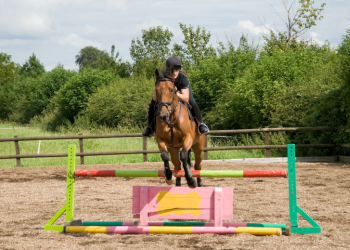
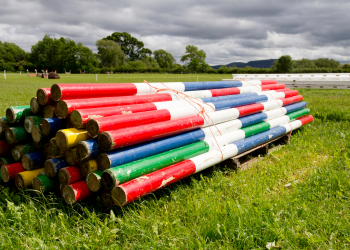

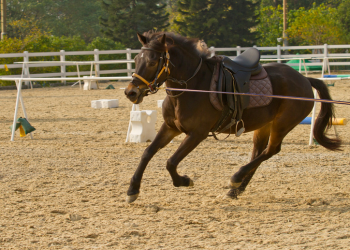
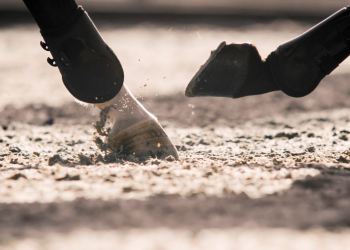
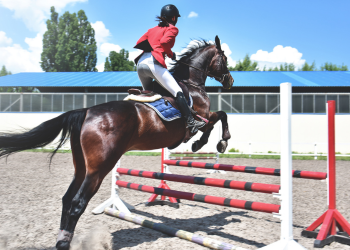
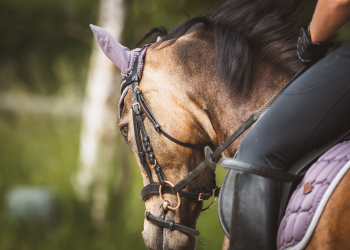
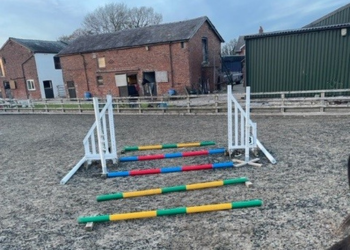
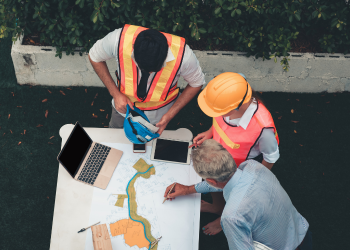
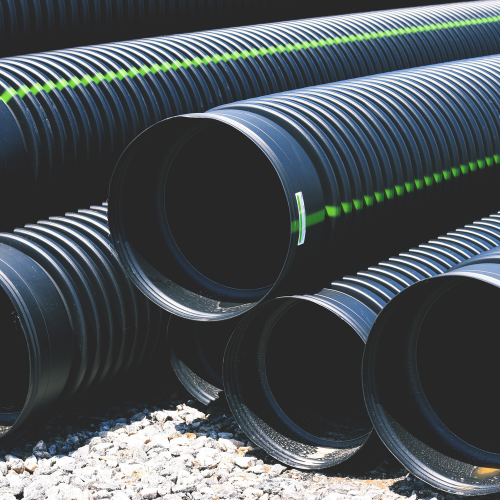
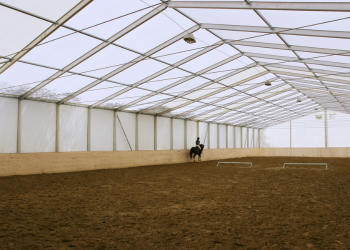
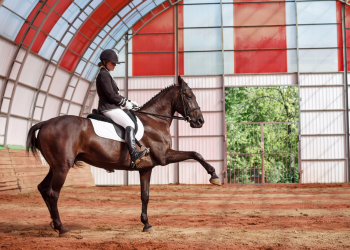
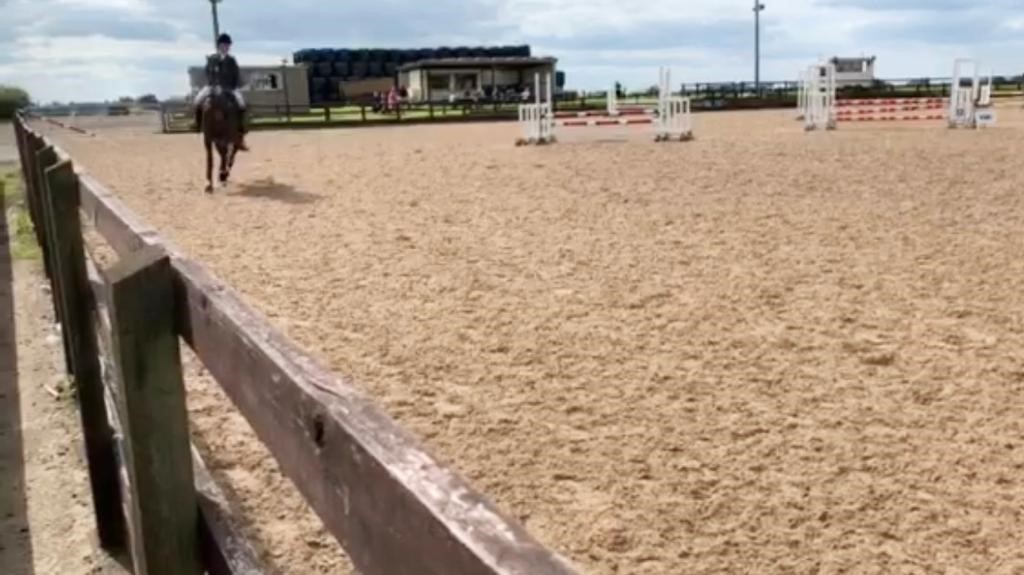

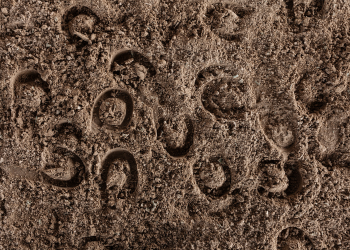

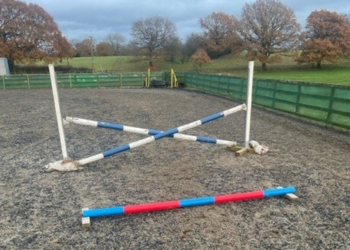

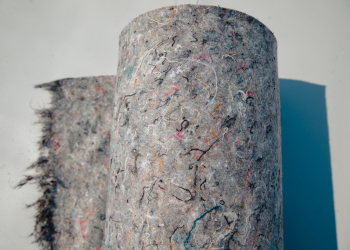
We Aim To Reply To All Enquiries With-in 24-Hours